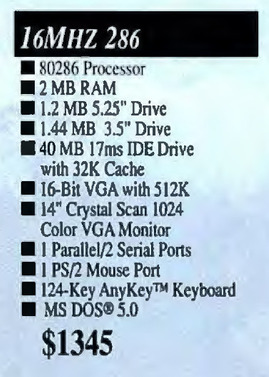+1
A 286 can run a variety of Standard VGA games (mode 12h, 640x480 16c).
Super VGA titles, too, but there weren't so many of them to begin with.
In the early 286 days, many VGA cards had a lumpy 256KB of RAM, still. Especially on-board VGAs.
So Super VGA was being limited to 800x600 16c in practice. Or 640x400 256c, which was seldomly being used.
640x400 256c also needed VBE support, whereas 16c colour support merely needs to know the right mode number for a given card (there are exceptions, as usual; ATI cards I vaguely remember).
That's because 16c video modes normally keep the default memory organization of Hi-Res EGA/Standard VGA.
256c modes may use something different, though, so VBE support through a VBE BIOS or a VBE TSR is being required.
Of course, with lots of dedication, support for multiple SVGA chipsets could have been implemented in the games directly without the use of VBE. But that's more work than just maintaining a list of video modes for 800x600 16c.
I mean, some applications (maybe games, too) written with Turbo Pascal/C may have shipped with SVGA.BGI, which was a popular Super VGA library in the 90s.
https://github.com/jharg93/SvgaBGI
Still, simulations and text-adventures with graphics usually supported 800x600 16c, at least.
Like Wonderland by Magnetic Scrolls (supports Paradise/V7 mode; Paradise can be patched to VBE).
MS Flight Simulator (4 onwards) supported it, too.
On Windows 3, the simulator "ATC: Air Traffic Controller" by Mallard Software Inc. had recommended a Super VGA resolution and a 20" monitor. And lots of RAM. Not bad for a ~1991 title.
There are more such titles, which perhaps didn't *require* Super VGA, but at least wanted full VGA resolution in 640x480.
These games can look awesome on a period-correct CRT monitor.
Like for example, those MegaTech titles. ;)
Or visual novels in general (for example, those by Jast USA).
On a 286, EMU386 can help running the DOS utilities to display Kanji character set. It does help to fix gibberish text.
OS/2 1.3 is another story, as well. It has a few board games, card games and logic games that play better on a bigger resolution.
In essence, that's true for a lot of Windows 3.1 applications/games, as well.
Both 640x480 256c and 800x600 16c/256c resolutions were being useful back then.
Having 256c available all time reduced dithering and colour glitches (Windows wants 20 colours to stay fixed). It also allowed for colour-cycling.
PS: Not really on topic, maybe, but the Gameboy emu "no$gmb" supports VBE and SVGA (ET4000 etc) on a 286.
Can be useful for Super Gameboy or GBC emulation, which feature an increased colour depth.
"Time, it seems, doesn't flow. For some it's fast, for some it's slow.
In what to one race is no time at all, another race can rise and fall..." - The Minstrel
//My video channel//
